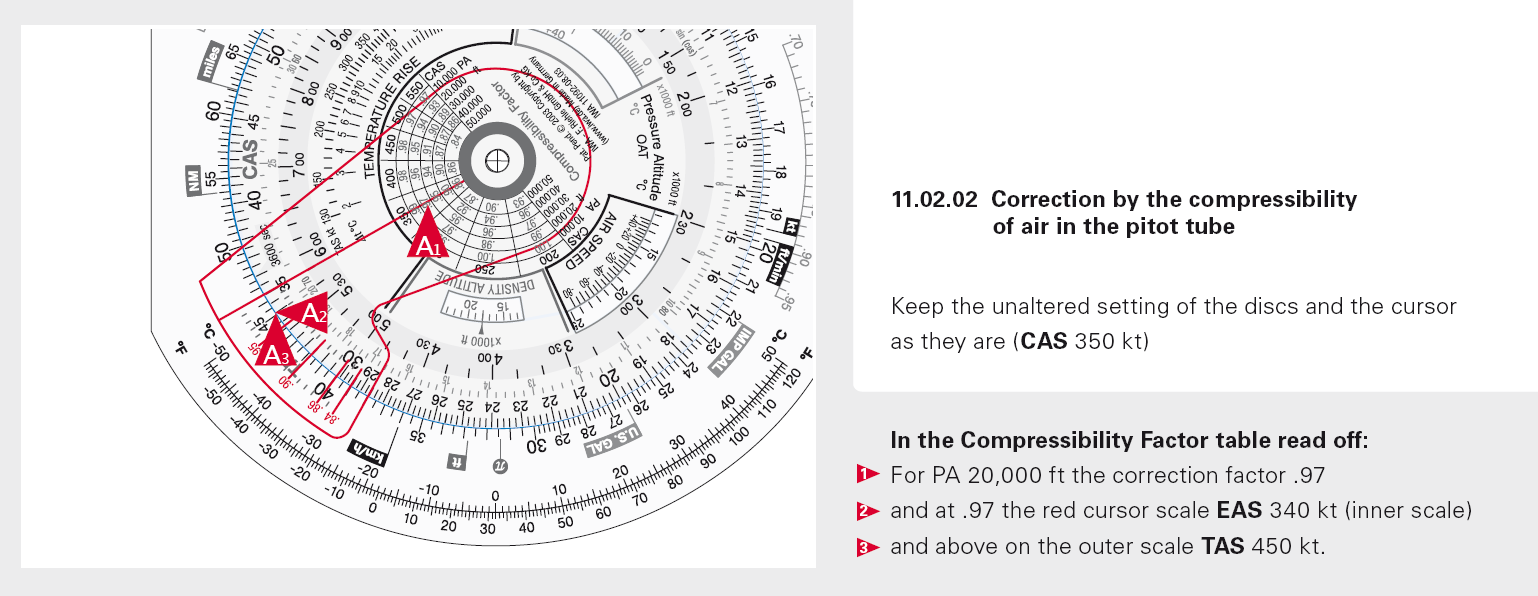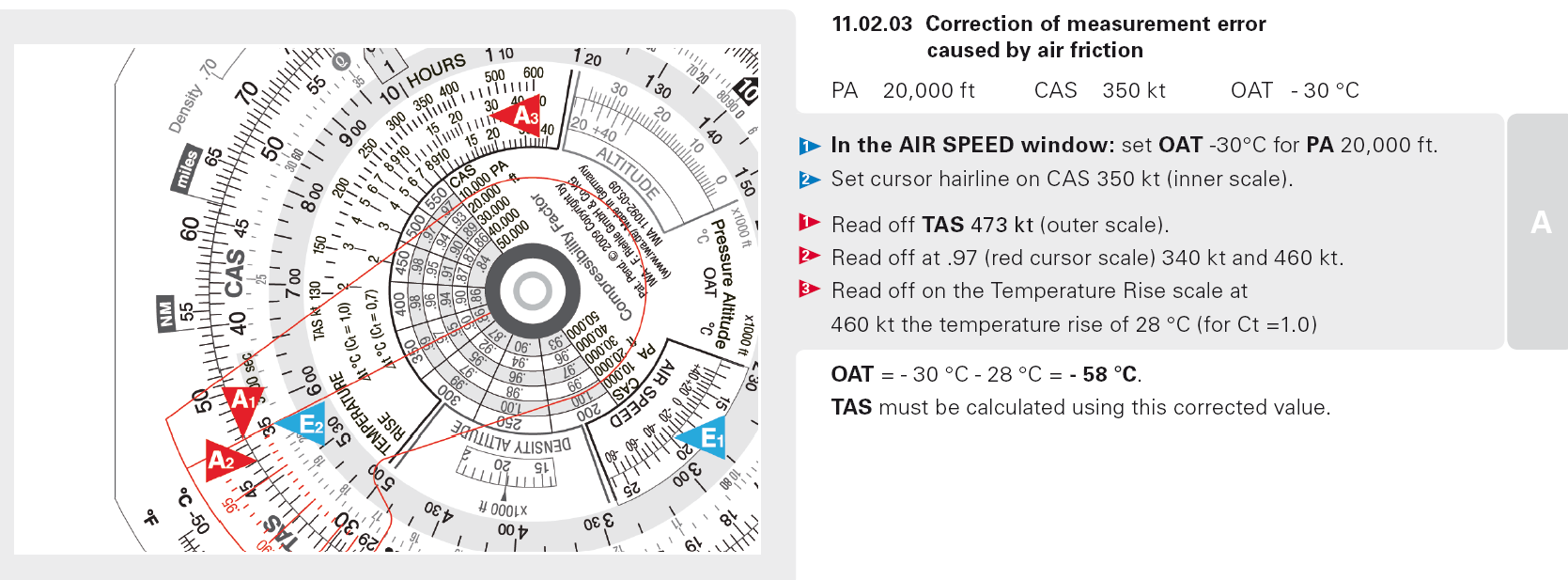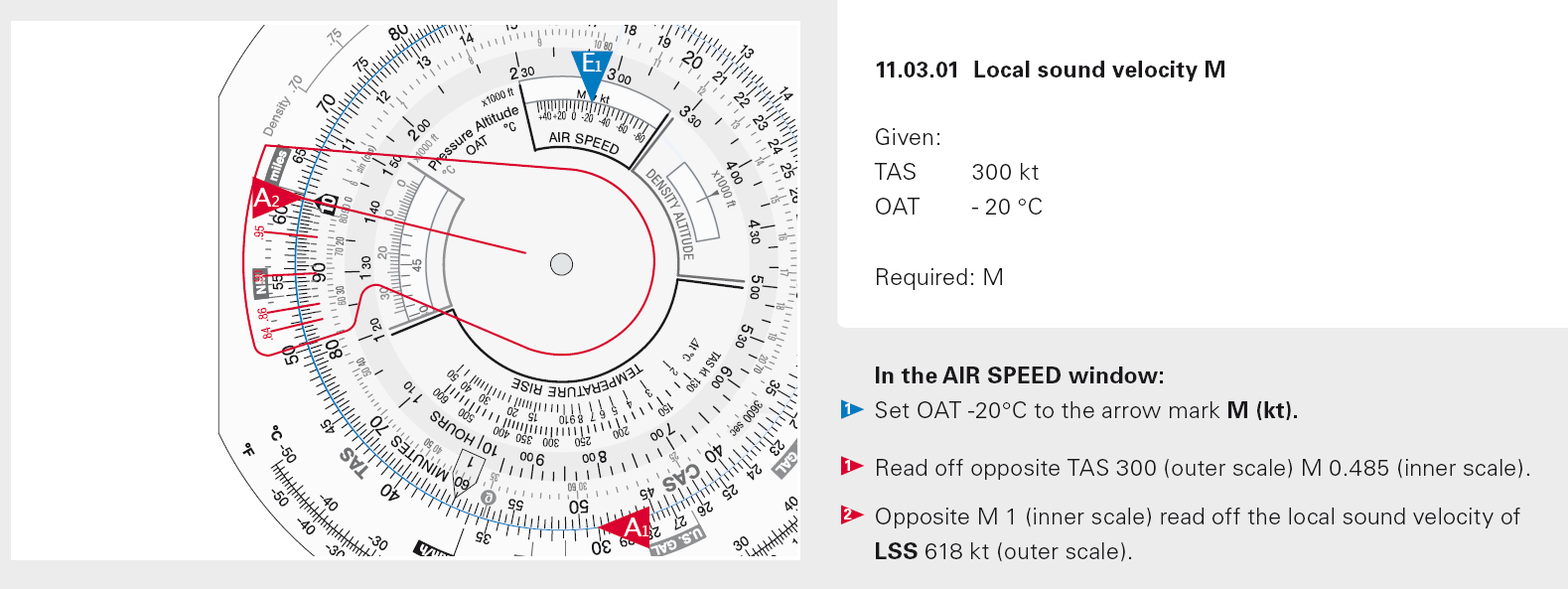General speed calculations
11.01 Definitions of speed
The Air Speed window is for calculating True Air Speed (TAS). Four types of flight speeds are used:
IAS (Indicated Air Speed).
This is the speed read from the instrument, calibrated to MSL and ISA. This value, corrected by the values taken from the flight manual gives the
CAS (Calibrated Air Speed).
For speeds < 200 kt and heights < 10,000 ft, this value must be corrected by the compressibility of air in the pitot tube to give the
EAS (Equivalent Air Speed).
This value corrected by the density gives the
DAS (Density Air Speed),
which has to be corrected by the temperature deviation of IAS. After which this gives the
TAS (True Air Speed).
The scales in the Air Speed window can be used to correct this.
In the following examples it is assumed that the OAT (Outside Air Temperature) is known for the flight altitude (e.g. from the weather report). If the TAS is calculated from the outside air temperature measured during the flight allowance should be made for the fact that the indicated temperature is increased through the air friction on the outer surface of the aircraft fuselage.




